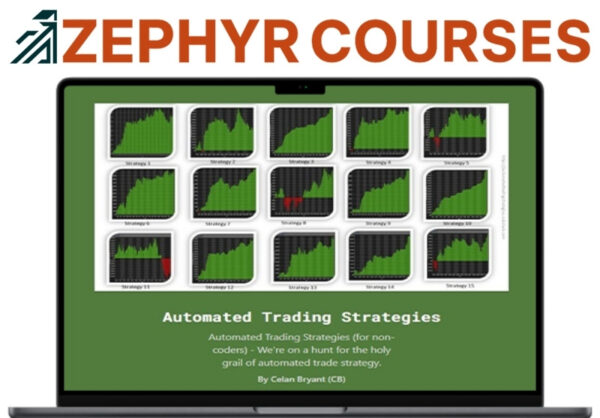Description
AI-Driven Approaches Transforming Algorithmic Trading
As artificial intelligence rapidly evolves, it’s reshaping how algorithmic trading operates across global markets.
You no longer rely solely on static rules or historical data patterns. Instead, you use machine learning to analyze vast datasets, uncover subtle correlations, and adapt to market shifts with unprecedented speed.
With predictive analytics, you can anticipate price movements, identify emerging trends, and manage risks more proactively.
Integrating Real-Time Data for Smarter Automation
Building on the power of AI-driven strategies, the next leap in automated trading comes from harnessing real-time data streams. You need to process market changes as they happen, not after the fact.
Real time analytics enables your trading system to react instantly to price shifts, news, and order book dynamics. By integrating live feeds, your strategies adapt to volatility, seize sudden opportunities, and mitigate risks before they escalate.
Data visualization also plays an essential role. When you visualize streaming data, you spot patterns and anomalies that might otherwise go unnoticed.
This clarity empowers you to tweak algorithms and set triggers based on up-to-the-second market conditions. Ultimately, leveraging real time analytics and dynamic data visualization makes your automation smarter, faster, and considerably more competitive.
Emerging Platforms and Tools Empowering Retail Traders
While institutional investors once dominated algorithmic trading, a new wave of platforms is now leveling the playing field for retail traders. You no longer need coding expertise or deep pockets to access sophisticated trading tools.
Modern platforms focus on user experience, offering intuitive interfaces, visual strategy builders, and straightforward onboarding. These advances let you experiment, backtest, and automate strategies with ease.
Platform accessibility is also much improved. Cloud-based solutions and mobile apps mean you can monitor trades or tweak algorithms from anywhere.
Some platforms integrate with major brokers, giving you direct market access without complex setups. With powerful analytics and real-time alerts, you can respond quickly to market changes.
These emerging tools empower you to compete, innovate, and grow your trading ambitions.
Frequently Asked Questions
What Are the Legal Risks Associated With Automated Trading Strategies?
You face legal risks like failing regulatory compliance and encountering liability issues if your automated trading strategies break market rules or cause unintended losses. Stay updated on regulations and thoroughly test your systems to reduce exposure.
How Much Capital Is Recommended to Start With Automated Trading?
When starting, you should assess your risk tolerance before deciding on your initial investment. Many experts suggest you begin with at least $5,000, but you can start smaller if you’re comfortable managing higher relative risks.
Can Automated Strategies Be Used for Long-Term Investing?
You can absolutely use automated strategies for long-term investing. Focus on strategies that prioritize long term performance and align with your investment horizon. You’ll want to monitor and adjust them periodically to guarantee they continue meeting your goals.
How Do You Backtest an Automated Trading Strategy Effectively?
To backtest an automated trading strategy effectively, you’ll select reliable data sources, define clear performance metrics, and simulate trades over historical data. You’ll analyze results, spot weaknesses, and refine your strategy before risking real capital.
Are There Tax Implications Unique to Automated Trading Profits?
When you profit from automated trading, you’ll face specific tax regulations. You must report gains, and some jurisdictions may treat them differently from manual trades. Always consult a tax professional to guarantee you comply with local tax regulations.








